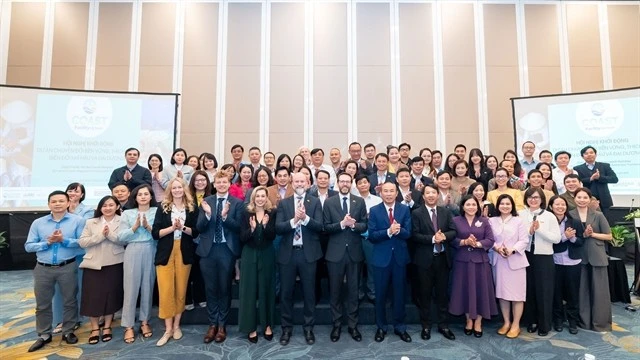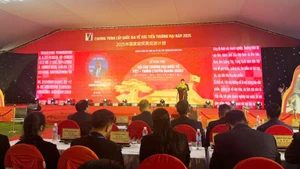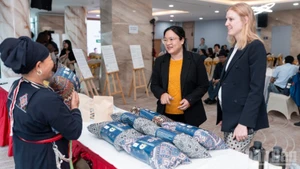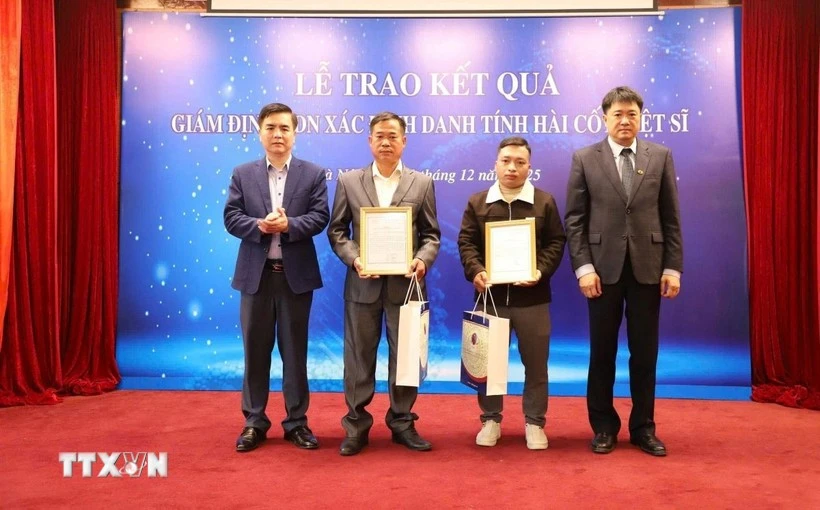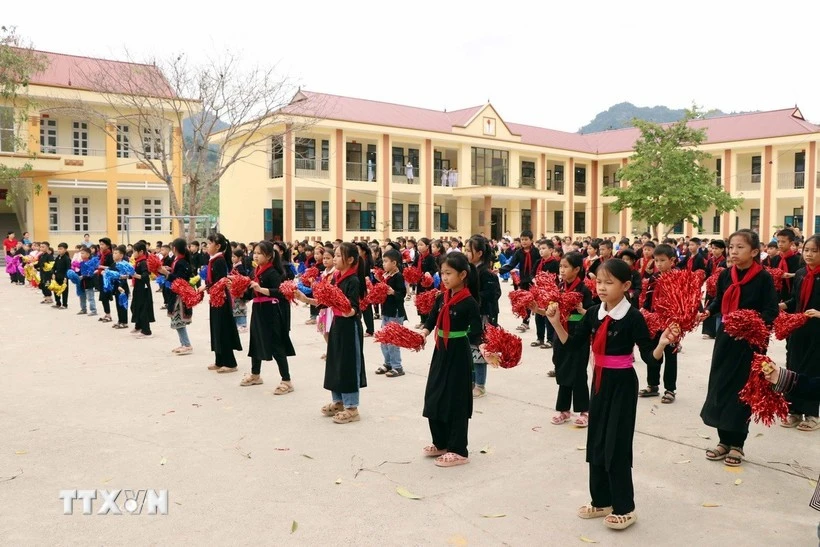However, policies to improve the quality of human resources, in terms of knowledge, health, and skills, bring Vietnam firmly into the new era of rising up.
The golden population structure is when the proportion of the working-age population (from 15-64 years old) accounts for a higher proportion than the dependents (under 15 and over 64 years old).
Opportunities and challenges go hand in hand
According to the United Nations Population Fund, Vietnam officially entered the golden population period in 2007 and is estimated to last about 30-35 years.
This means that during this period, Vietnam will have a large young workforce capable of contributing to the rapid development of Vietnam's economy if we know how to exploit this valuable resource to the fullest.
Dr Pham Vu Hoang, Vice Director of the General Office for Population and Family Planning under the Ministry of Health, said that Vietnam is taking advantage of the golden population structure, with nearly 70% of the workforce under 40 years old, which is favourable for acquiring new scientific, technological and technical knowledge.
This young workforce creates a huge amount of material wealth, creating large accumulated value for the future and ensuring social security when the country enters the ageing population stage.
The golden population structure is when the proportion of the working-age population (15-64 years old) is higher than the dependent population (under 15 and over 64 years old).
Looking back over the past 20 years, Vietnam has achieved important results for socio-economic development since entering the golden population period. GDP per capita has been increasing, and food security has been ensured, contributing significantly to hunger eradication and poverty reduction.
The combination of population size and golden population structure brings an abundant labour force for economic growth, contributing to building and defending the Fatherland in the new situation. Notably, the average life expectancy of people has increased, the birth rate has decreased, and the birth rate has been maintained close to the replacement level. This helps rebalance the population and rejuvenate the workforce.
According to Deputy Minister of Health Do Xuan Tuyen, the golden population brings hope but many challenges. If we do not take advantage of this opportunity, Vietnam will face many difficulties when the golden population transitions to an ageing population.
In addition, although we have maintained the replacement fertility rate, there is a difference in rates between regions, with the Southeast and Mekong Delta regions having lower fertility rates than the replacement fertility rate. The challenge of population ageing reduces labour resources and increases the burden on the social security system.
It is worth noting that Vietnam has a rapidly ageing population, with people aged 60 and over increasing from 11.9% of the total population (in 2019) to 13% (in 2022) and forecast to be more than 25% (in 2050). Around 2038, Vietnam will end its golden population period and officially enter the ageing population stage.
Professor Dr Nguyen Dinh Cu (Chairman of the Scientific Council - Institute for Population, Family and Children Research) said that the golden population structure is both an opportunity and a challenge, Vietnam has 1.6 million people entering working age each year. However, 70% of this force is unskilled labour.
With a large proportion of untrained labour resources, out of 51.7 million workers nationwide (in 2022), up to 73.6% (about 38.1 million people) do not have technical expertise. Only 26.4% of workers have technical expertise, but the number of people with university degrees or higher is only 11.9%.
The shortage of highly skilled labour in commerce, finance, banking, and technology is a significant challenge. If we do not fully take advantage of the golden population, the country risks a "not rich but old" situation.
The golden population not only brings hope but also brings many challenges. If we do not take advantage of the opportunity, Vietnam will face many difficulties when the golden population turns into an ageing population.
Do Xuan Tuyen
Deputy Minister of Health
Professor Dr Nguyen Thanh Long (National Economics University) said that more than 70% of unskilled workers have become a challenge for Vietnam's integration and development process. The development of technology and science needs highly qualified workers.
With the increase in globalisation, flexible global supply chains, digital technology applications, and e-commerce development are inseparable factors from the trend of sustainable development. Vietnam has a large margin of economic development to successfully integrate into the global economy and take advantage of the golden population structure opportunity. It requires a "truly golden" workforce of knowledge, skills and expertise.
Some opinions say it will be difficult to attract large enterprises, although Vietnam has invested in industrial park infrastructure and preferential policies, it is without a "foundation" of high-quality labour resources. The above challenges will become a burden, causing the opposite effect of the golden population period.
Turning challenges into opportunities to rise up
In finding a solution to this problem, Deputy Minister of Health Do Xuan Tuyen said that there is no other way, we must make the most of the golden population structure human resources to accelerate socio-economic development.
Policies must be synchronised from the macro to the micro level, from economic policies to education, health, and social security, to create a healthy workforce. It is necessary to invest more in social welfare issues for the elderly and to avoid the period when the ageing population increases rapidly, which will put great pressure on the social welfare system.
To effectively carry out the tasks of population work, it is necessary to maintain a sustainable replacement fertility rate, care for the health of the elderly, adapt to population ageing and improve population quality. The focus must be on reviewing, amending, supplementing and perfecting institutions, mechanisms, policies, and laws on population, focusing on solutions to maintain a sustainable replacement fertility rate nationwide, suitable for regions.
Notably, Resolution No. 21-NQ/TW of the 6th Conference of the 12th Party Central Committee on population work in the new situation clearly stated that the goal of population work in the new situation is to comprehensively and synchronously resolve issues of population size, structure, distribution, and quality and place them in a reciprocal relationship with socio-economic development; firmly maintain the replacement fertility rate; bring the sex ratio at birth to a natural balance; effectively utilise the golden population structure, adapt to population ageing; distribute the population reasonably; and improve the quality of the population sustainably.
In addition, it is necessary to have appropriate policies and mechanisms to improve the quality of human resources, meet the needs of the labour market, promote increased labour productivity, create jobs for the young labour force, and ensure social security for the elderly and vulnerable people. At the same time, it is necessary to improve workers' skills to improve the quality of human resources and meet the labour market’s needs in the country's new development stage.
Reaching a population of 100 million people is considered a proud milestone that helps enhance Vietnam's position with international friends and partners. With a large population, along with appropriate investment incentive policies, a stable political environment, and a culture imbued with national identity, Vietnam is becoming a destination and investment for international friends.
In each region, it is necessary to ensure a population size appropriate to the area and territory and harmony between ages; maintain a stable proportion of the working-age population, slow down the transition from the ageing population to the ageing population, develop social security services and implement programs to care for the elderly.
It is necessary to increase employment opportunities, aiming for jobs that create high-added value based on labour productivity. In addition, it is necessary to invest and develop high-quality human resources, especially in remote, isolated and disadvantaged areas.
Reaching a population of 100 million people is considered a proud milestone that helps enhance Vietnam's position with international friends and partners. With a large population, along with appropriate investment incentive policies, a stable political environment, and a culture imbued with national identity, Vietnam is becoming a destination and investment destination for international friends.

